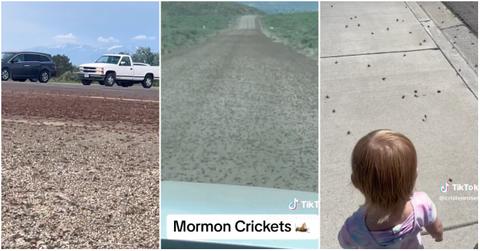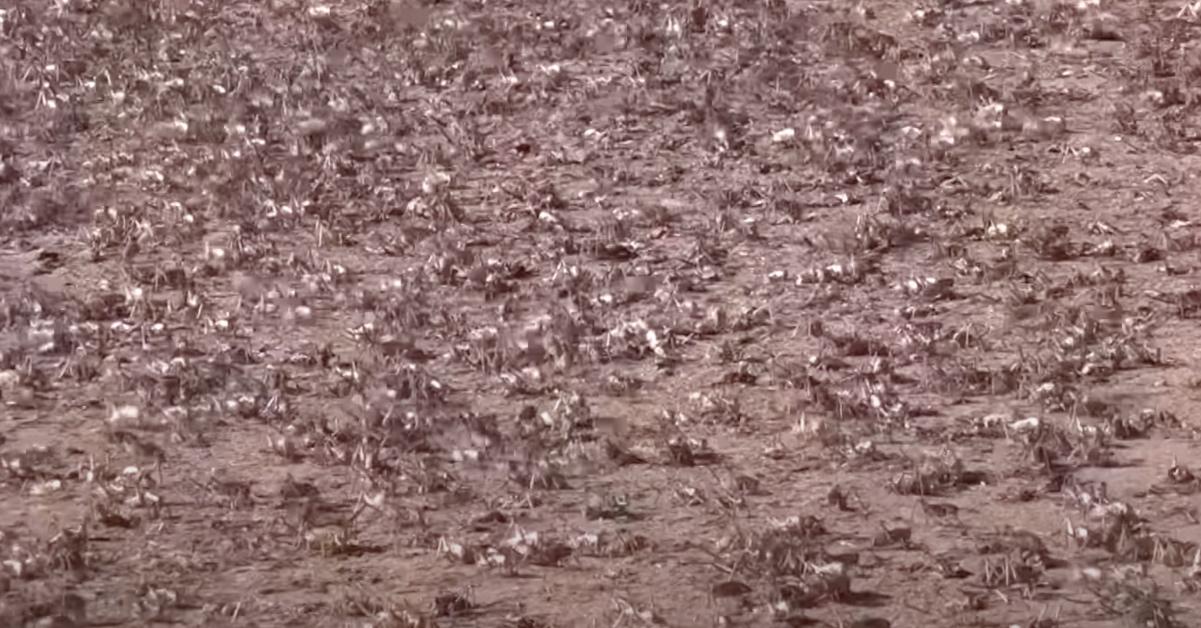Mormon Crickets, Explained: What Are They and Why Are There so Many of Them?
Published Aug. 2 2023, 4:15 p.m. ET
Unless you live in the western part of the U.S., you are probably unfamiliar with Mormon crickets. These large insects are also sometimes called katydids, bush crickets, and previously, "long-horned grasshoppers."
However, chances are you’ve heard about them because, in 2023, there have been numerous stories in the media about how millions of these insects have invaded towns in Nevada and other parts of the West.
Let’s take an in-depth look into Mormon crickets: what they are, their life cycle, and why there are so many of them in 2023.
What are Mormon crickets?
If you didn't know, Mormon crickets are not actually crickets but members of the katydid family. Unlike the katydid, Mormon crickets don’t have wings and, therefore, can’t fly. Instead of wings, they have a hard shield covering their back. According to information from Washington State University, most Mormon crickets are about 1.5 to 2 inches long.
Mormon crickets got their name after a swarm of the insects decimated crops of Mormon pioneers that settled on the shore of Great Salt Lake back in 1848, according to the article “Mormons, Crickets, and Gulls: A New Look at an Old Story,” in the Utah Historical Quarterly.
As the “Miracle of Gulls” story goes, the Mormons were saved in the “Cricket War of 1848” by thousands of seagulls that descended upon the area and ate up the offending insects, wrote author William Hartley for the Utah Historical Quarterly. A monument called the Sea Gull Monument now stands in downtown Salt Lake City in memory of the event.
Mormon crickets are known to be voracious eaters, gobbling up everything in their path, including other Mormon crickets that are dead or dying. Since they don’t have wings, they migrate on foot. Scenes from Nevada of thousands, if not millions, of Mormon crickets on the road, in yards, and covering buildings are eerily apocalyptic.
Mormon crickets are infesting certain areas.
In June and early July 2023, the Nevada town of Elko was overrun by Mormon crickets. The situation was so bad that the state Department of Transportation was using snowplows to clear the roads of the bugs, which were creating a hazard for motorists whose vehicles would slide on the dead bug guts covering the road.
Elko resident Colette Reynolds shared on TikTok a horror scene of tons of Mormon crickets all over her porch, sidewalk, and outside walls of her home that were keeping her and her husband hostage in their own home.
“They migrate through our town every year, but our town has never been hit this hard before. And our home has never been hit like this,” Reynolds said in a June 13, 2023, TikTok video. “We woke up to these things on Sunday, and, like I said, every day, it just seems to be getting worse and worse.”
Mormon cricket infestations were also reported in Oregon, Colorado, Idaho, Utah and Wyoming, the Steamboat Pilot & Today reports.
Why are there so many Mormon crickets in 2023?
Mormon cricket outbreaks like the one in 2023 are often due to drought conditions, as stated by researchers at the University of Nevada, Reno. The outbreaks can last from five to 21 years. However, Knight believes wet winter conditions contributed to the 2023 outbreak.
“This year, we’re really delayed, we didn’t get hatching until mid-April, so the wet winter and the winter we had dictated that,” Knight told KSL5 TV.
The Mormon cricket life cycle may be coming to an end.
Thankfully, a reprieve from the Mormon crickets may be on the horizon. Based on what Nevada entomologist Jeff Knight told the Associated Press, after mating, the male Mormon crickets die, and the females die after laying their eggs.
According to Washington State University, the eggs laid by female Mormon crickets hatch in the spring between March and May. It takes about 60 days for a nymph Mormon cricket to mature into an adult. Adults may feed and lay eggs up through late August.

